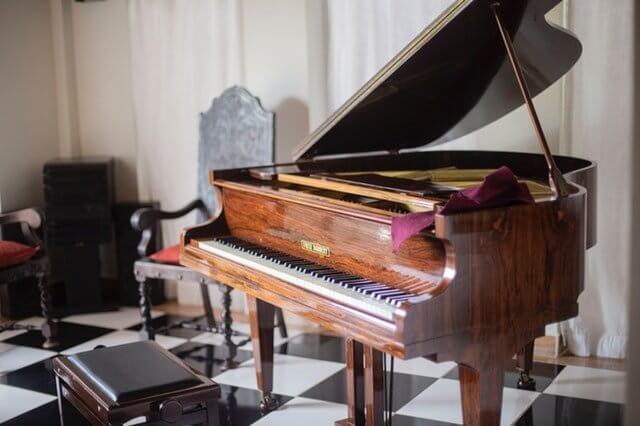*Keyboardkraze now has a nearly 24/7 chat service directly with me should you have any questions regarding keyboard/plugin choices! This is connected directly to me and it is not AI.
Table of Contents
The G Major scale is an inviting key that is easy to navigate on the piano. It is one of the very first piano scales you will learn, and for a good reason; it only has one sharp. This article will break down everything you need to know about the G Major piano scale and how to play it on the piano.
The G Major scale is the next step to learn after learning how to play the C Major scale.
Beginners can play G Major without much finger dexterity as you don’t have to worry about any crazy finger patterns.
Should you be looking to figure out how many sharps are in the key of G Major, the simple answer is one, which is F#.
G Major Scale Notes
The notes of G Major consist of G,A,B,C,D,E,F#,G. The only sharp in G Major is F#, making it a relatively simple key to learn and practice scales in.
The G Major scale follows the same simple steps that other Major keys follows: W,W,H,W,W,W,W. W refers to whole, whereas H refers to half.
You will be playing six white keys and one black key (F#) to play the G Major scale on the piano.
As always, I suggest playing this scale with your dominant hand first to understand the notes.
Fingering
Your left hand will start with your pinky finger, which is your five finger on your left hand. Each finger from there counts down to one and then counts upward.
Your right hand starts with your thumb, which is your one finger, and counts upwards to five
The consistency here is that your thumb finger is always your one finger for both hands.
How To Play G Major Scale With Your Right Hand
Place your one finger or thumb on G and then play the following notes, A,B,C,D,E,F#,G.
The notes are as follows with the correct fingering:
G(1)
A(2)
B(3)
C(1)
D(2)
E(3)
F#(4)
G(5)
To descend, you will do the following:
G(5)
F#(4)
E(3)
D(2)
C(1)
B(3)
A(2)
G(1)
How To Play G Major Scale With Left Hand
Place your fiver finger(pinky) on G and play the following notes until you reach G.
G(5)
A(4)
B(3)
C(2)
D(1)
E(3)
F#(2)
G(1)
To descend, follow these notes and fingering to reach your goal.
G(1)
F#(2)
E(3)
D(1)
C(2)
B(3)
A(4)
G(5)
Combining Your Hands
Playing this scale with both hands is fulfilling as you have reached your goal of learning the G Major piano scale.
In order to master this scale, I suggest you work on playing the first five notes and descending back to your starting note.
How To Get Better At This Scale
Improving your piano scales is essential is a pianist. If you’re looking to develop and get better at playing piano scales indeed, I suggest learning the fingering and getting used to it.
Once you understand the basic fingering for Major scales, you will then play any scale, assuming you know the notes.
Always use your metronome when playing scales in the beginning. You will get better much faster if you use a metronome.
I suggest starting slow and increasing your tempo up to 144 BPM before switching to a new scale.
Wrapping Up
I recommend practicing the G Major scale for 10-20 minutes a day while grabbing a grasp for the key. Now that you understand the key in general, I hope you can the G Major scale.
I can’t stress the importance of learning scales early on, as this will lead to finger dexterity and good habits on your long journey.







